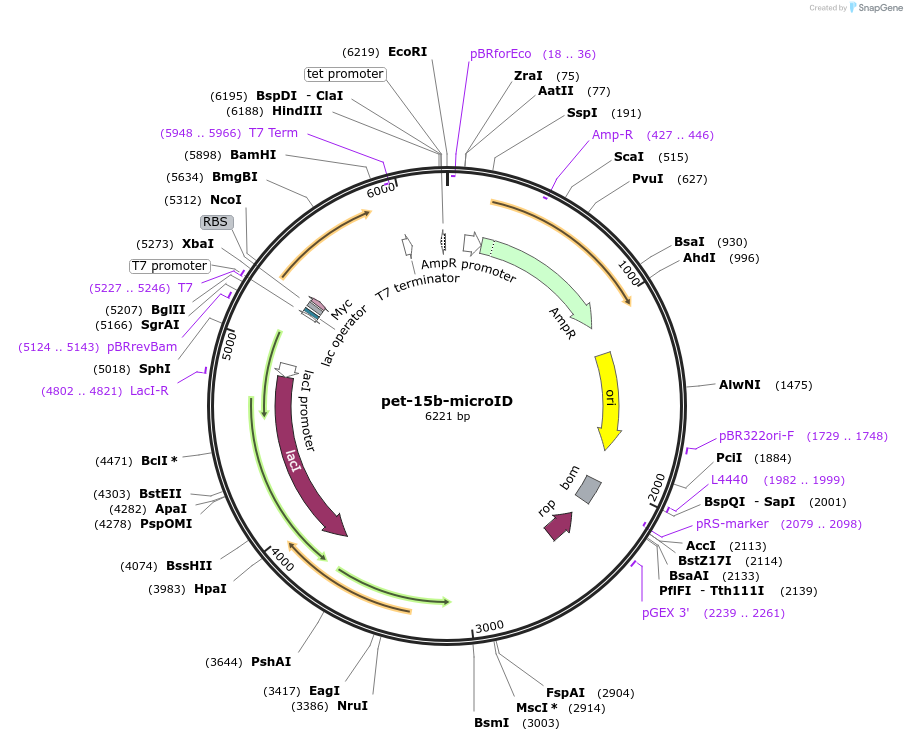pet-15b-microID
(Plasmid
#172881)
-
Purposeexpresses microID in E. coli
-
Depositing Lab
-
Sequence Information
Ordering
| Item | Catalog # | Description | Quantity | Price (USD) | |
|---|---|---|---|---|---|
| Plasmid | 172881 | Standard format: Plasmid sent in bacteria as agar stab | 1 | $89 | |
Backbone
-
Vector backbonepET-15b
-
Backbone manufacturerNovagen (EMD Millipore)
- Backbone size w/o insert (bp) 5657
- Total vector size (bp) 6224
-
Vector typeBacterial Expression
Growth in Bacteria
-
Bacterial Resistance(s)Ampicillin, 100 μg/mL
-
Growth Temperature37°C
-
Growth Strain(s)DH5alpha
-
Copy numberLow Copy
Gene/Insert
-
Gene/Insert namemicroID
-
Speciesaquifex aeolicus
-
Insert Size (bp)567
-
Mutationfragment ([aa2-171]) of aquifex aeolicus BirA with the substitution R40G
- Promoter T7
-
Tag
/ Fusion Protein
- myc (N terminal on backbone)
Cloning Information
- Cloning method Restriction Enzyme
- 5′ cloning site NcoI (not destroyed)
- 3′ cloning site SmaI (destroyed during cloning)
- 5′ sequencing primer taatacgactcactatagg
- 3′ sequencing primer CTAGTTATTGCTCAGCGGT
- (Common Sequencing Primers)
Resource Information
-
Supplemental Documents
-
A portion of this plasmid was derived from a plasmid made bythe insert sequence is derived from Addgene number 74223
Terms and Licenses
-
Academic/Nonprofit Terms
-
Industry Terms
- Not Available to Industry
Trademarks:
- Zeocin® is an InvivoGen trademark.
These plasmids were created by your colleagues. Please acknowledge the Principal Investigator, cite the article in which the plasmids were described, and include Addgene in the Materials and Methods of your future publications.
-
For your Materials & Methods section:
pet-15b-microID was a gift from Julien Béthune (Addgene plasmid # 172881 ; http://n2t.net/addgene:172881 ; RRID:Addgene_172881) -
For your References section:
Engineering of ultraID, a compact and hyperactive enzyme for proximity-dependent biotinylation in living cells. Kubitz L, Bitsch S, Zhao X, Schmitt K, Deweid L, Roehrig A, Barazzone EC, Valerius O, Kolmar H, Bethune J. Commun Biol. 2022 Jul 4;5(1):657. doi: 10.1038/s42003-022-03604-5. 10.1038/s42003-022-03604-5 PubMed 35788163







